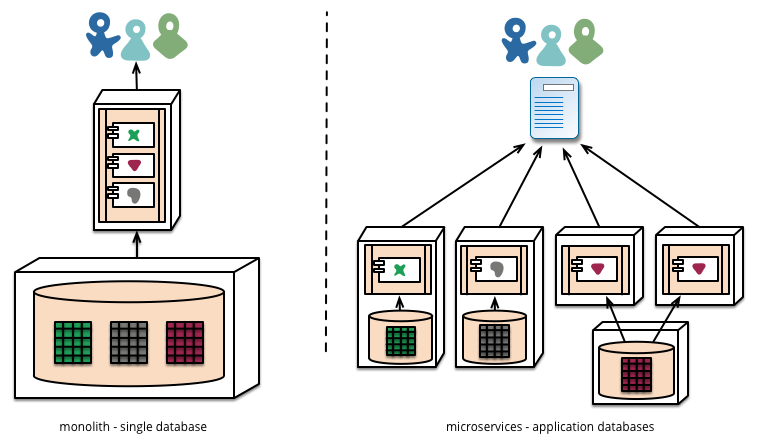Let's talk positives and negatives of the microservice approach.
First negatives. When you create microservices, you're adding inherent complexity in your code. You're adding overhead. You're making it harder to replicate the environment (eg for developers). You're making debugging intermittent problems harder.
Let me illustrate a real downside. Consider hypothetically the case where you have 100 microservices called while generating a page, each of which does the right thing 99.9% of the time. But 0.05% of the time they produce wrong results. And 0.05% of the time there is a slow connection request where, say, a TCP/IP timeout is needed to connect and that takes 5 seconds. About 90.5% of the time your request works perfectly. But around 5% of the time you have wrong results and about 5% of time your page is slow. And every non-reproducible failure has a different cause.
Unless you put a lot of thought around tooling for monitoring, reproducing, and so on, this is going to turn into a mess. Particularly when one microservice calls another that calls another a few layers deep. And once you have problems, it will only get worse over time.
OK, this sounds like a nightmare (and more than one company has created huge problems for themselves by going down this path). Success is only possible you are clearly aware of the potential downside and consistently work to address it.
So what about that monolithic approach?
It turns out that a monolithic application is just as easy to modularize as microservices. And a function call is both cheaper and more reliable in practice than an RPC call. So you can develop the same thing except that it is more reliable, runs faster, and involves less code.
OK, then why do companies go to the microservices approach?
The answer is because as you scale, there is a limit to what you can do with a monolithic application. After so many users, so many requests, and so on, you reach a point where databases do not scale, webservers can't keep your code in memory, and so on. Furthermore microservice approaches allow for independent and incremental upgrades of your application. Therefore a microservice architecture is a solution to scaling your application.
My personal rule of thumb is that going from code in a scripting language (eg Python) to optimized C++ generally can improve 1-2 orders of magnitude on both performance and memory usage. Going the other way to a distributed architecture adds a magnitude to resource requirements but lets you scale indefinitely. You can make a distributed architecture work, but doing so is harder.
Therefore I would say that if you are starting a personal project, go monolithic. Learn how to do that well. Don't be distributed because (Google|eBay|Amazon|etc) are. If you land in a large company that is distributed, pay close attention to how they make it work and don't screw it up. And if you wind up having to do the transition, be very, very careful because you're doing something hard that is easy to get very, very wrong.
Disclosure, I have close to 20 years of experience in companies of all sizes. And yes, I've seen both monolithic and distributed architectures up close and personal. It is based on that experience that I am telling you that a distributed microservice architecture really is something that you do because you need to, and not because it is somehow cleaner and better.

